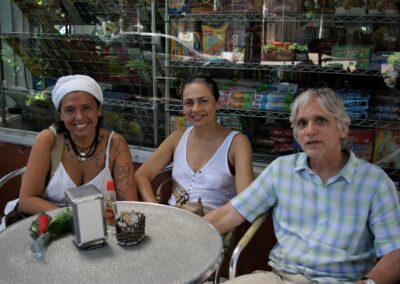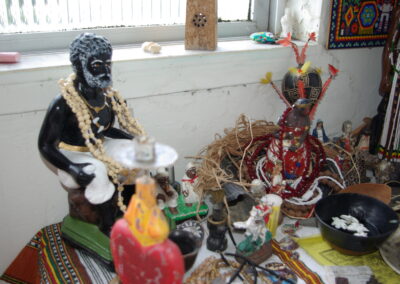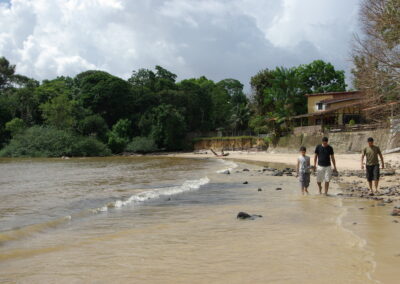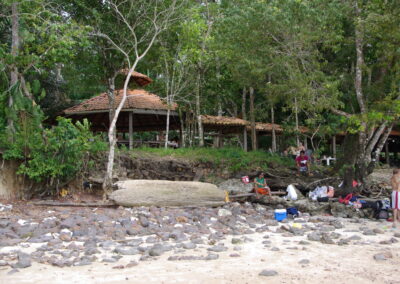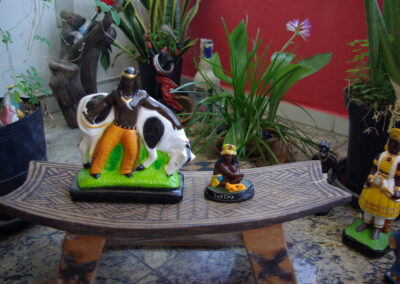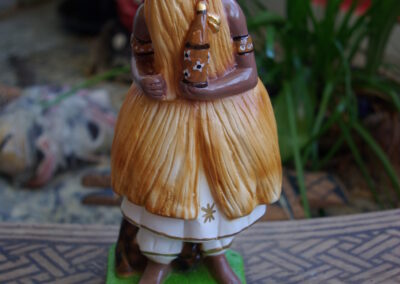EF
Erin Frias MA
Training Developer and Coordinator for California State Parks


Full Work History

Degree's and Transcripts

Letters of Recommendation

Current Training
Bear Necessities “was an excellent session. Please extend my sincere thanks to your team. The presentation was fresh, direct and effective. Having participated in many similar trainings – the program that all of you presented was the best.”
– Armando Quintero, Director of California Parks and Recreation
What I can bring to your training team?
A Unique Perspective
I am a cultural anthropologist who specializes in understanding why we do the things we do, how we talk about it, and most of all how we create inclusive and exclusive identities within smaller work cultures.
Not many people know this, but corporations have been employing anthropologists for decades, and that is a conservative estimate. Anthropologists can study the internal employee cultures and learn their strengths and weaknesses. This can aid supervisors in changing toxic environments to collaborative teams or uneducated employees to excited and productive employees through relatable training.
I currently work for the California Department of Parks and Recreation as a training coordinator for the Human Rights Office. I design and deliver sexual harassment and discrimination training to over 5000 state employees.
In the past year I have designed and implemented two live training courses called Bear in Mind: Fundamentals of Workplace Awareness, and the supervisor and lead level EEO training called Bear Necessities.
We had just begun the 2020 training year when COVID-19 changed everything. I was responsible for changing our in-person classes to 6 self-directed workbooks, 2 virtually led classes in less than six months. I could not have done it without my teammates. Together we were able to meet the requirements for California State Law train all of our Supervisors in 4 months. We also set a record for the highest compliancy rate.
Rounding Out a Team
Since businesses and corporations function like a sub-culture within the larger society. Having an anthropologist on your team can open up a new world of knowledge, communication, and understanding about your specific workplace culture.
Anthropologists can:
– Provide in depth research on the subcultures within the department.
– Help leadership discover strengths and weaknesses in communication and management styles.
– Create workplace trainings that employees are eager to attend because it addresses their wants and needs.
– Develop targeted marketing and communication strategies that will have employees going straight to the training section for all their training.
– Use linguistic strategies to generate interest and relatable material.
– Develop training by utilizing my skills in PowerPoint and Adobe Creative Suite.
Other Strengths to Contribute
In addition to my formal education, I have a background in ceramics, painting, drawing, and photography. Every project I take on, I combine my artistic skills, and my formal education, with my ability to generate new and interesting ideas. I am not going to lie, my ideas are not all gems, but some ideas turn into training programs that both staff and training teams end up enjoying and leave having learned something.
I have always been able to incorporate creative ideas into my training development. When I worked for Sacramento County Department of Human Assistance, I was responsible for creating 12 PowerPoints that were used in training employment workshops in 6 locations across the county. I was also instrumental in implementing 2 training sessions that went over current issues facing the unemployed in the age of technology.
I am currently developing an EEO training workbook and Virtual Instructor Lead Training (ViLT) for Zoom that is interactive. Our first ViLT class launched in September 2020 to our leadership staff. We were able to successfully train all of our non-compliant supervisors in 4 months.
Since last year, I have taken advantage of the LinkedIn Learning program to learn how to use Photoshop so I could illustrate my own graphics. I have plans to learn more about InDesign and Captivate Software in order to create professional training programs that are relatable and meaningful.
Instructional Design
My Approach

ADDIE Model for Training Development
All training developed for the California Department of Parks and Recreation was created using the 5 step ADDIE Model for instructional design. Analysis, design, development, implementation, and evaluation. During my tenure as a Training Coordinator, I have attended two state-sponsored courses on training development for in-class training, and for our current situation, Virtual Instructor Lead Training (ViLT). Using my new-found knowledge, I have designed a challenging ViLT version of Bear Necessities that has received rave reviews. The training is interactive with true and false quizzes and other games that challenge the knowledge they have gained through the self-directed workbook supplied before the course. Most importantly, it challenges the notion that online trainings are boring and one-sided.

Knowledge of Adult Learning Styles
After years of studying adult learning styles to overcome a personal struggle, I have come to recognize the need for diverse training methods. We all have visual, auditory, and kinesthetic learning capabilities. I develop training that addresses all three. For Bear in Mind 2021, I illustrated the workbook using a combination of designs that relate directly to the employees. The brightly colored graphics directly relate to the content and provide a visual representation of the concepts we are training. Auditory learners have 2 options; Adobe has a feature that can read the content of the workbook to the employee, and then the addition of the Zoom Training reinforces the key concepts with knowledgeable trainers. It would seem that the kinesthetic learners would suffer the most with online training, but when you gamify the content and have them interact with every slide even the kinesthetic learner’s benefit.

Targeted Training Development
With my eclectic background, I can design a training program that relates to certain populations within the department. For example, over the last few years I have built rapport between several supervisors and administrative officers around the state. The reason for that is because I believe the targeted training should be influenced heavily by the people who will be taking the training. Before I designed Bear Necessities: EEO Training for Supervisors and Leads, I wrote a survey asking for what kind of information supervisors needed from the Human Rights Office in order to do their job. I also performed informal interviews before and after in-class training. I was able to determine that supervisors were missing a critical skill in reporting sexual harassment and discrimination to our office. No one knew how to fill out the forms.
Research in Brazil 2013 and 2014
While in graduate school, I traveled to Brazil to do research with an urban religious community. The community celebrated the religion of Umbanda which views spirits of the dead and West African gods, called Orixas, as wise and protective. They are especially invested in those who let the spirits use their body for healing and partying. In the western world, it is known as spirit possession, but to them it is an investment in their survival in the tough urban streets of Belem, Brazil.
This is a photo gallery of my time there during the summers of 2013 and 2014.


